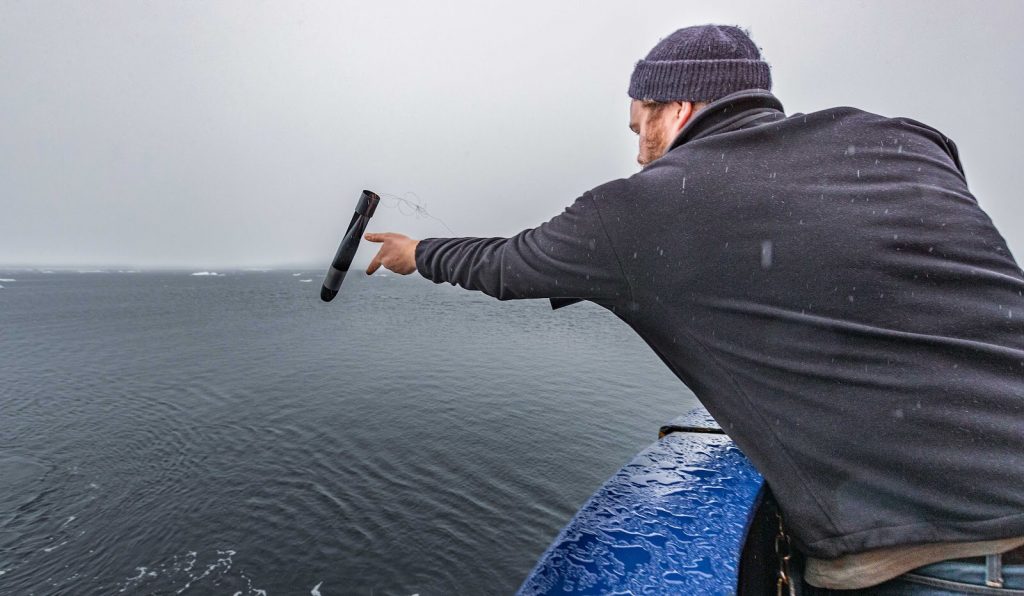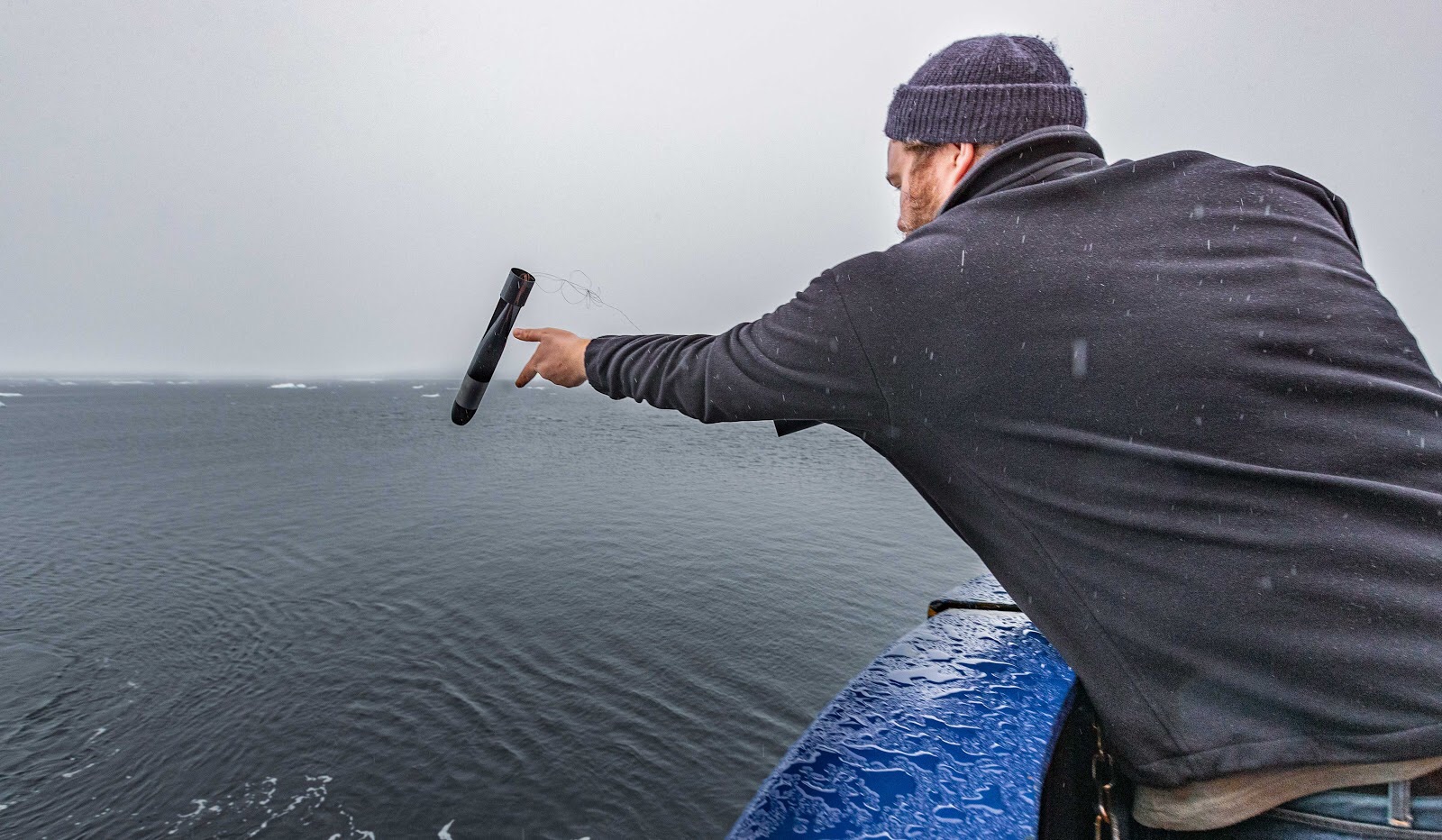by Matthew Shupe, CIRES/NOAA scientist and co-coordinator of MOSAiC
Our process of investigating the environmental system can have its own environmental impacts. A few of these are major. These ships burn 10-40 tons of fuel per day with the proportional emissions of carbon dioxide, aerosols, black carbon and more. We also launch four weather balloons each day, leaving little plastic boxes and latex where they land. All together about 800 kg of waste being left out on the sea ice. There have been various installations lost to the elements, some on purpose, taking with them batteries, electronics, plastics, and other materials. One of our flux sleds was swallowed by a pressure ridge. We removed what was possible, but in the end the ice still held on to some parts and they will now remain in the Arctic Ocean. Another bit one is the flagging we used to mark our ice floe. Flags are important for safety, for signaling, for marking pathways and scientific installations. But our flags degraded over time. After months of flapping in the Arctic winds they became tattered and frayed, losing little synthetic fibers. At some point during Leg 3, there were little neon green and orange threads littered all over the MOSAiC floe. Some people put in a huge effort to bring in what seemed like 1000 flags, their bamboo poles, and the threads they shed. There are many other examples like these…. The impacts of the science itself. And this has been a hot topic of our discussion here as we head home. How can we make our science more friendly for this delicate environment we study? The answers have been wide reaching and varied. Of course there are ways to improve our materials: biodegradable weather balloons would be a great start. But there are many other ways to make improvements that require development and investment. We’ve discussed how some of this could occur at the individual level, all across the field sciences. But we generally feel that policies are needed to place a stronger incentive, or even mandate, to promote change. Ideally this all channels through high-level policy makers. But it could also be implemented by funding agencies. As part of the proposal process it is typically necessary to describe the plans for outreach, data management, mentorship, and so many other areas. Environmental impact assessment could be managed or documented in a similar way. But how do we promote this type of progress? Another great idea that I very much liked was basically the efficiency argument. By the end of MOSAiC there will have been a fixed amount of environmental impact, the investment will have been made. But we control the scientific output, the return on those investments. The more good science we can accomplish for the investments, the better, and the less impact per unit of knowledge gained. I like this concept very much because it addresses the efficiency side of the equation. One last idea that I’ll put to words is the idea of a consulting firm that deals with sustainable science. To me this seems like a viable direction, though it might already exist. This group could work with the science community, both individually and collectively, to develop new, more sustainable approaches, instruments, materials. They could work with agencies that want to implement new policies. They could advocate for new policies and help to coordinate the community around these ideas. And if really ambitious, it could have a branch that builds solutions. A couple people here could be the ones to implement such an idea to help nurture sustainable science in a more substantial way. As within the rest of our lives, the foundational message of our discussions was clear: At some level we all have a choice and an impact. We can put in the extra effort to make our field science more sustainable and less detrimental if we choose to do so.


